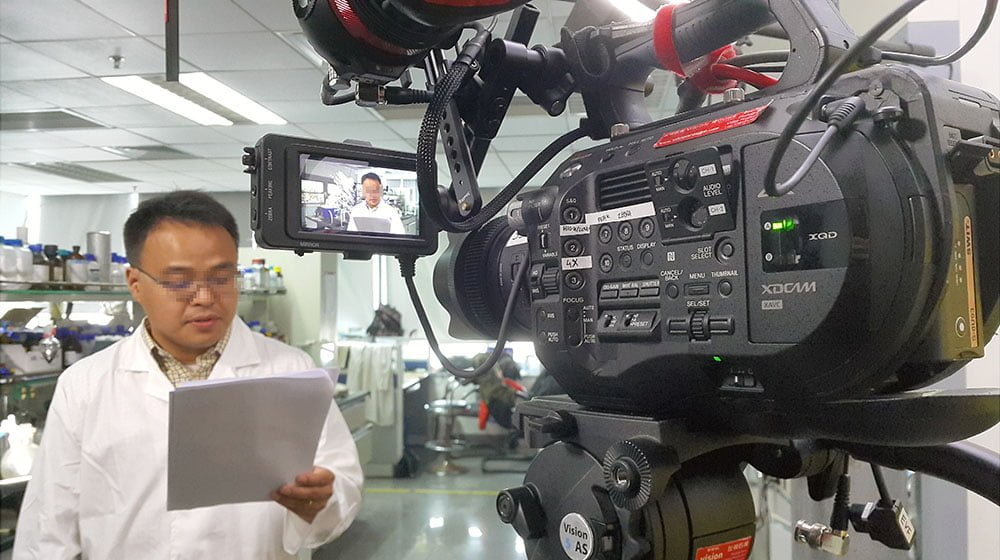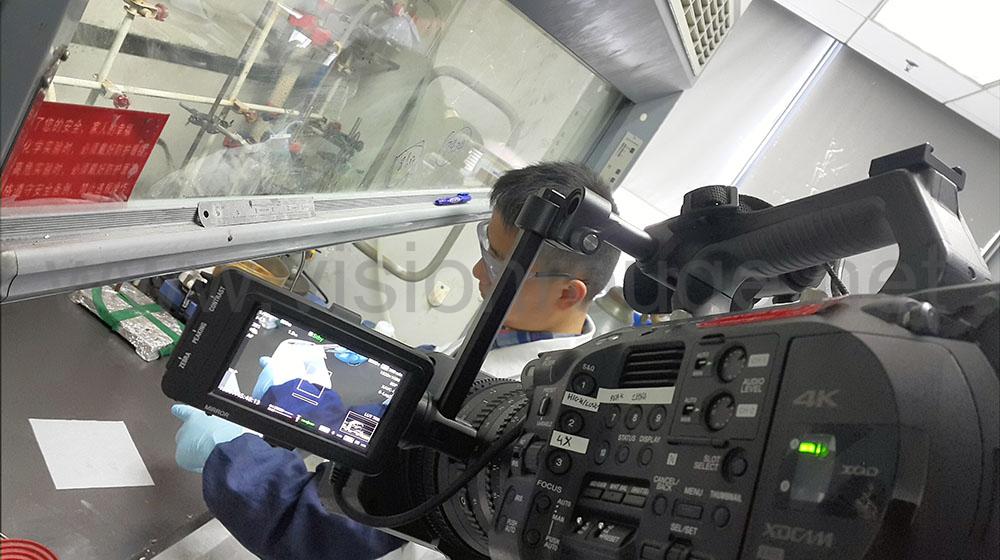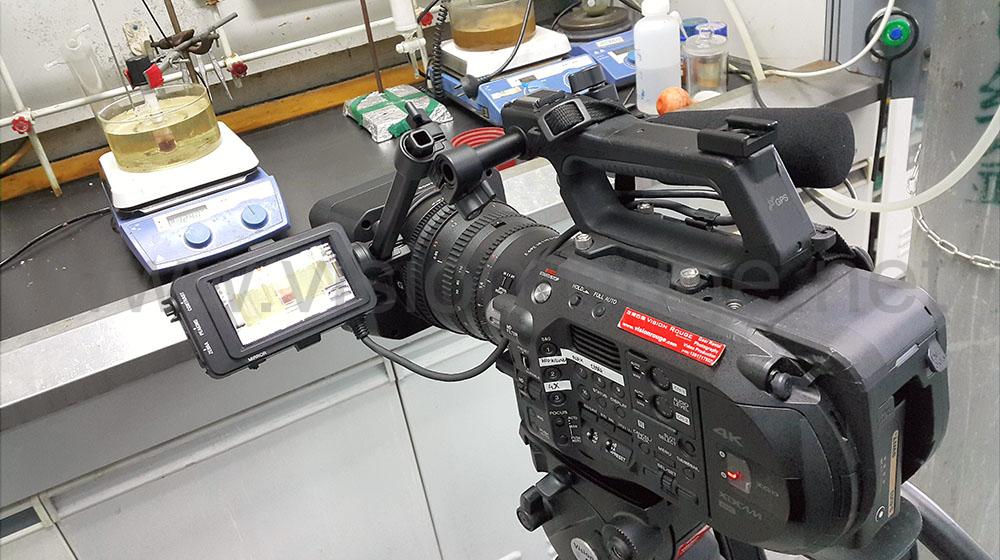How to shoot S-LOG with Sony PXW-FS7?
How to shoot S-Log in with the Sony FS7? (and why you should)
Shooting S-log is a bit like recording in 4K but watching it on your phone, compressed by Youtube.
You are recording more information and will decide later if you want to use it or not. Shooting large resolution as 4K let you have more room for re-framing or stabilizing your footage. With S-Log, it’s a bit the same; You record more of the highlight and shadows and see is you may want to change the exposure later. It works a bit the same than shooting raw. The main difference is that raw takes a lot of space in your memory card, where S log tried to keep all acceptable. There are less latitude than in raw, but way less space also, and it can be done without any external recorder.
Why this name?
S-log stand for Sony Log, You have also C-Log for canon, D-Log for DJI camera and so on. The principle is the same even if I will be talking here only about using it on a Sony FS7 camera. LOG stand for logarithmic as the shape of the mathematical calculation the camera need to do, have this S logarithmic shape .
How does it work?
Screens on you TV or your computer actually did not follow the fast development your camera sensor; you can record more information than your TV can display. This may change with HDR TV and preview screen, but for now; let keep it with regular TV/computer screen audience. Again, a bit like watching a Full HD video on a lower resolution screen, the picture look great, but you can’t tell the difference cause your screen is not able to display all of it.
You camera sensor can see at the same time in the dark and in the very bright area of your picture, but your TV have a limited range and simply can’t display it. Shooting “log” try to keep all in one and let you choose in post which part of the picture you would like to keep. So the dark areas change to dark grey areas, when your highlights are getting bright grey. At the end, all looks a bit the same grey (!) and in some way, very hard during your shooting to know what you are doing and if the exposure is right. Doing focus pulling on a non graded EVF is quite difficult. Also, if your client is behind you back, he will quickly ask you what’s going on with your camera as all looks lavish.
To keep it simple, let says that your camera try to get any possible information at the same time with a screen not able to see it all; not easy.
LUT?
The only way to see and use a S-log is to process it. You will have to make a correspondence between the footage you have and a mathematical calculation to get the right picture. As there are many S/C/D logs1,2,3…, you need to select the one you choose during your shooting and apply a LUT to get it right later in post during your editing. A LUT is simply a conversion (deleting finally what you don’t want to keep).
As you can adjust the LUT in post, it’s easy to understand why you shoot LOG: getting the exposure mistake fixed. As it record more information everywhere, it can also helps with the white balance adjustment.

How to see what I’m doing if all is grey?
With Sony FS7, there are a very simple way to shoot S-log and expose it correctly.
After choosing your desired S log (2 or 3: I let other blog explaining you the differences), you can apply a LUT directly to you viewfinder video signal; as simple as this! no need to wait to export it on your NLE for checking .
If you are using an external monitor, you can either apply it to the SDI output too, and, depending on the monitor, get also access to the LUT inside the monitor menu. Don’t choose to apply a LUT on the internal recording, of course. Sony put this option if you want to record without LUT with external recorder and with LUT inside the FS7 for proxy use, I guess.
Now that a LUT is automatically apply to your viewfinder, you can expose and check your level as before without LUT. I suggest a REC 709 LUT to get the zebra at 70% on your subject face.
One great thing with Sony FS7, is to be able to still see the crushed dark or over exposure and see if it’s still recorded in the camera. Let me explain; as you see a LUT from a Slog footage, you don’t know if there are still details in the dark area of your picture, they just look black or white.
The only way will be to switch back and forth between a preview with and without LUT but it will also shows you this grey picture and it’s not helping so much. On the FS7, you have this nice option: I suggest you to assign to one of the extra button: High / Low level.

On each press, you can see only the dark are, or only the over exposed and the third press bring you back to a regular LUT. Of course, you can still underexpose a footage or overexpose it (and destroy it).
S log gives you more latitude (14 stops, but not 20!)
To summarize how this is working. Your camera is 14 stops but your screen about nine. The low position shows you from 0 to 9, and the high position from 5 to 14 or so.
In S log, no more ISO?
Now, a funny trick is that there is no ISO setting available anymore. But there is something called “EI” instead …
As you are shooting S log, it’s means that you want to use the sensor at its best and so have a lot of latitude in post to work with your footage and this is happened only at 2,000 ISO with the Sony FS7. So, if you where allow to change ISO, you will lose the benefice of LOG. They are 2 ways to get out of this trouble:
-For overexposed scene (outside for example), use the ND filter and especially the Vari ND; it’s just amazing tools to get it right.
-For underexposed scenes where even opening the aperture or reducing shutter speed do nothing… Well, you can start using EI!
EI is a fake way to see what will look your footage if you push it in post, it’s a bit like the LUT in your viewfinder. It will simulate the ISO but will not change the way it is recorded (still 2,000 ISO). It will create a area in the metadata file alongside with your footage, to tell your NLE software that this part of the footage need to get gain increased and some NLE will do it automatically. Again, the recording will be the same whatever the EI level you will choose. Of course, as it’s just an help for you, I suggest you put back to L (Low level = 0) to make sure you are not overexposing the rest of the footage when you are back outside with the sun.
This is actually easy to compare with RAW in picture. A JPG picture at 100 ISO or at 1,000 is actually the same data extracted from the sensor, but with a gain added to get to this 1,000 ISO. Both RAW equivalent of your two JPG are exactly the same.
Cine EI is recording as it should be done from the sensor and a metadata added to tell you that it need some gain in post there. Sp shoot Cine EI with the lower gain to get the best of it.

And no more automatic White balance ?
White balance is also not working anymore, only 3 pre registered modes are available for you to give you kind of an idea on your screen monitor only. LOG footage can readjust white balance in post as well, no need to worry too much there. A camera sensor have it’s own fixed white balance, any change within the camera is a loss of information.
Latest firmware update
Sony released new firmware that actually let you change the ISO settings, even when recording Cine-EI. I guess this is to overcome the limitation you may be facing as explained. But I find this a bit weird and dangerous to actually do so. Cine-EI was a nice idea to make sure all shooting parameters are locked down and come directly from the sensor, letting you adjust it with a powerful workstation more than inside the camera body.
If you like this post, you can read more about Cine-EI here.
I hope this helps you understand and use more often the S Log mode on the FS7. Let me know in the comment part if you have any suggestion to make this post better.
And don’t forget to spend 2 second clicking on one of the Google advertising to support this website content.
